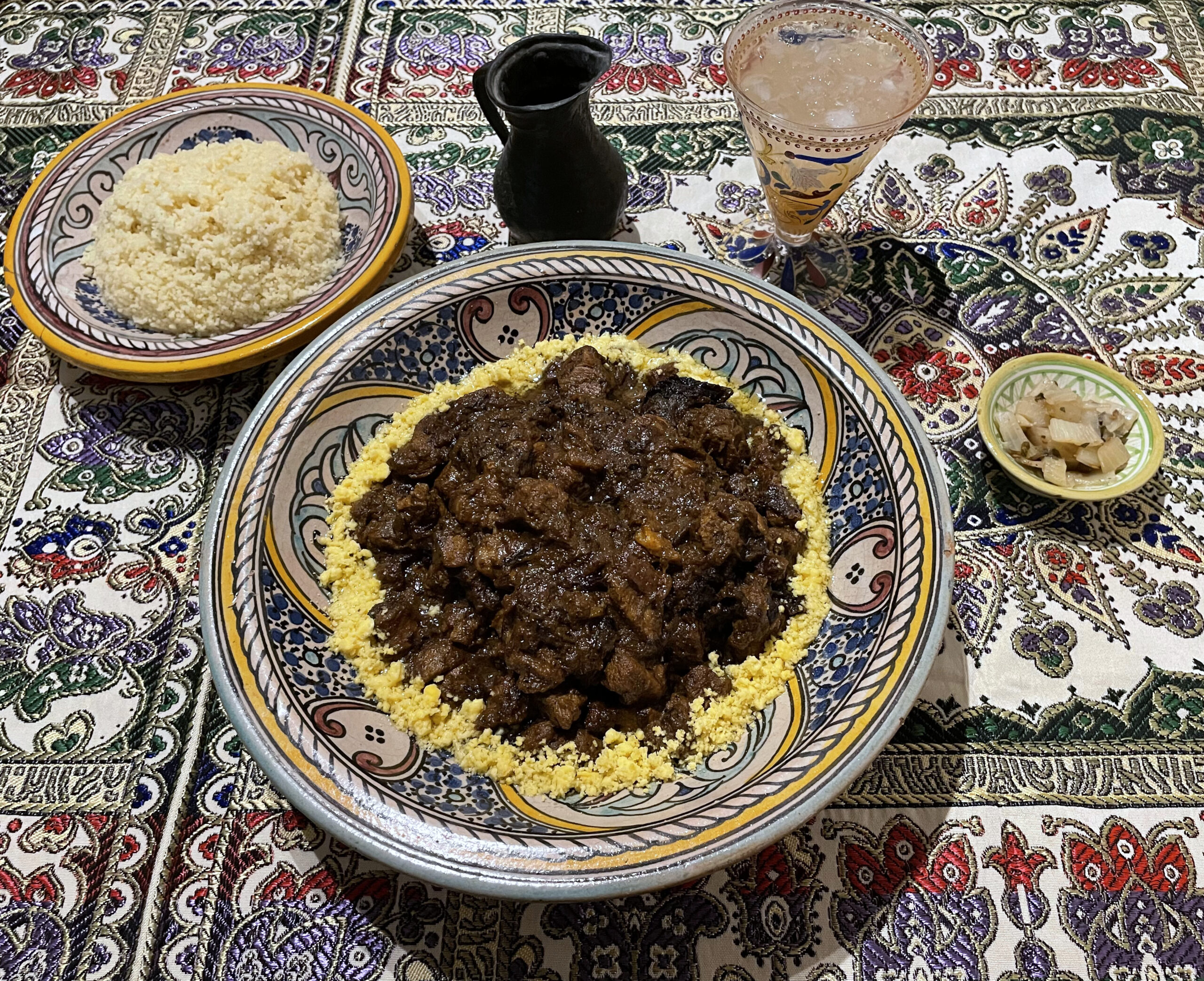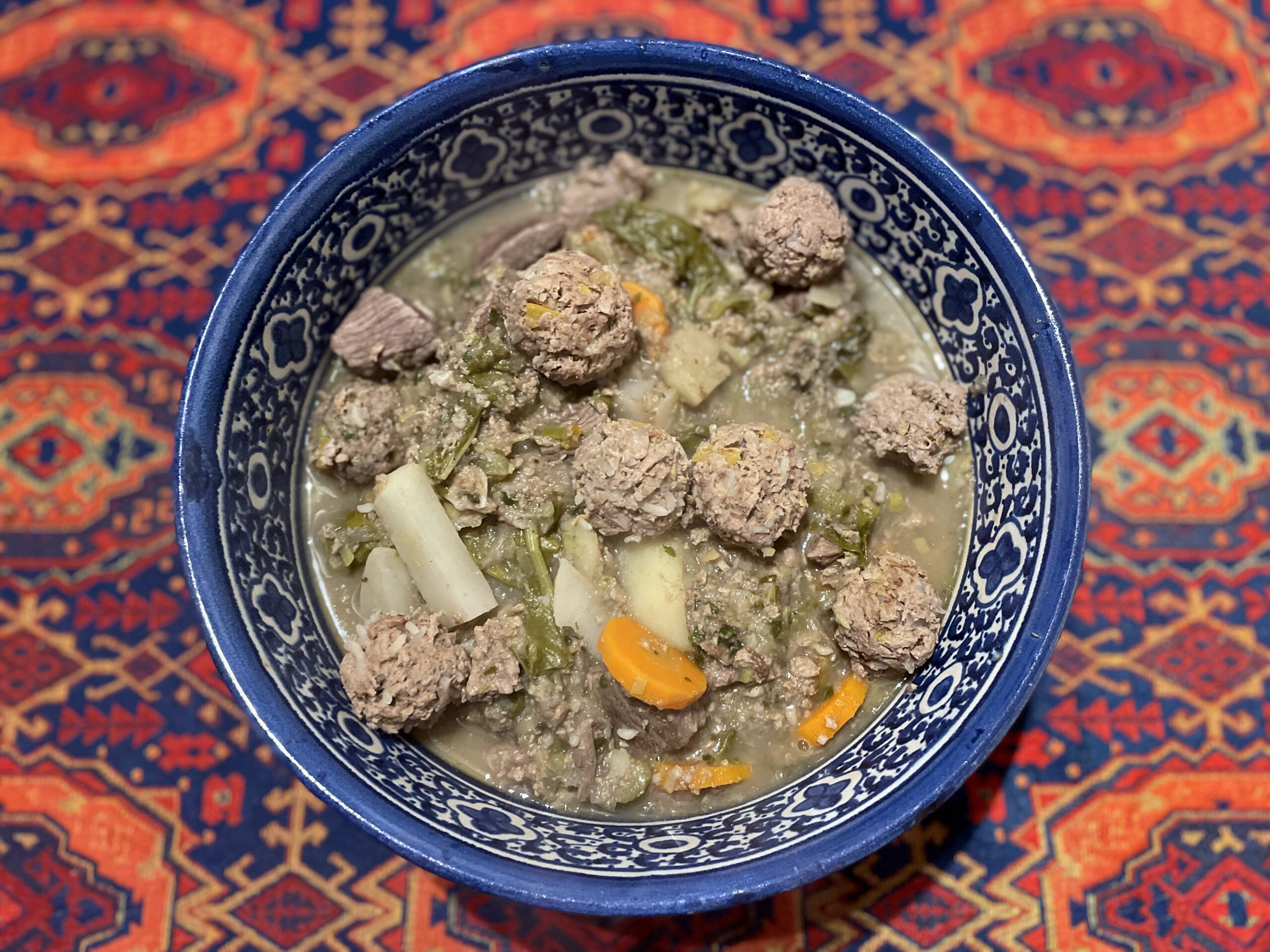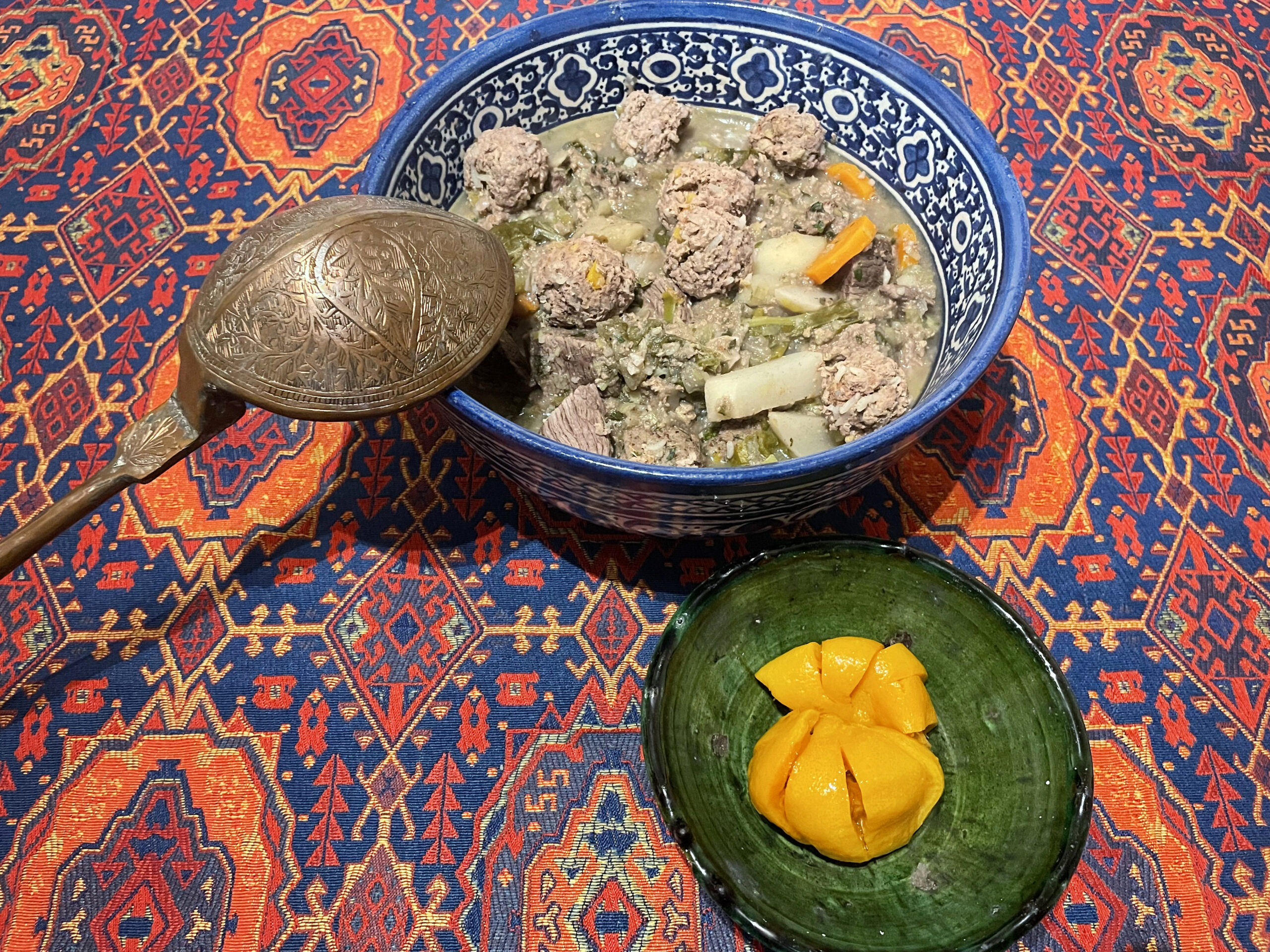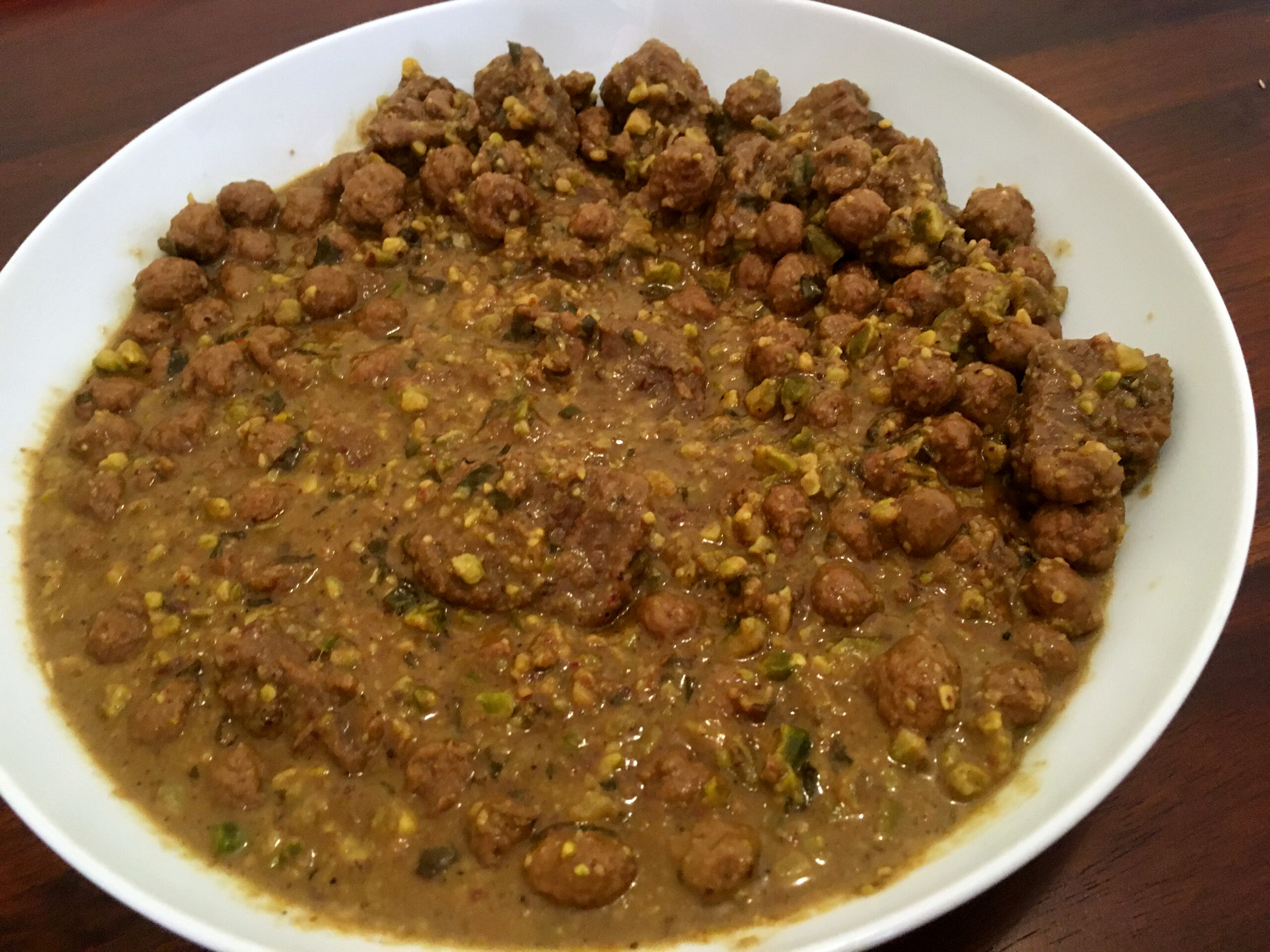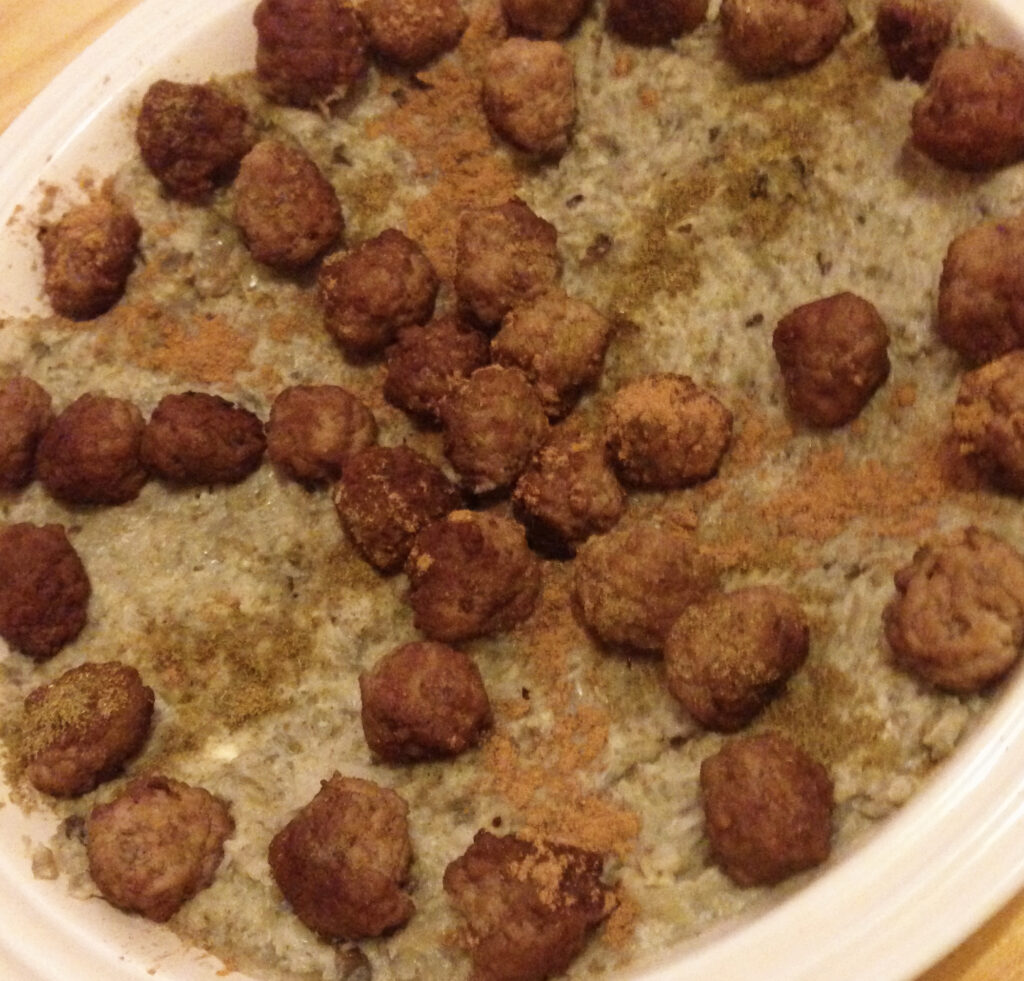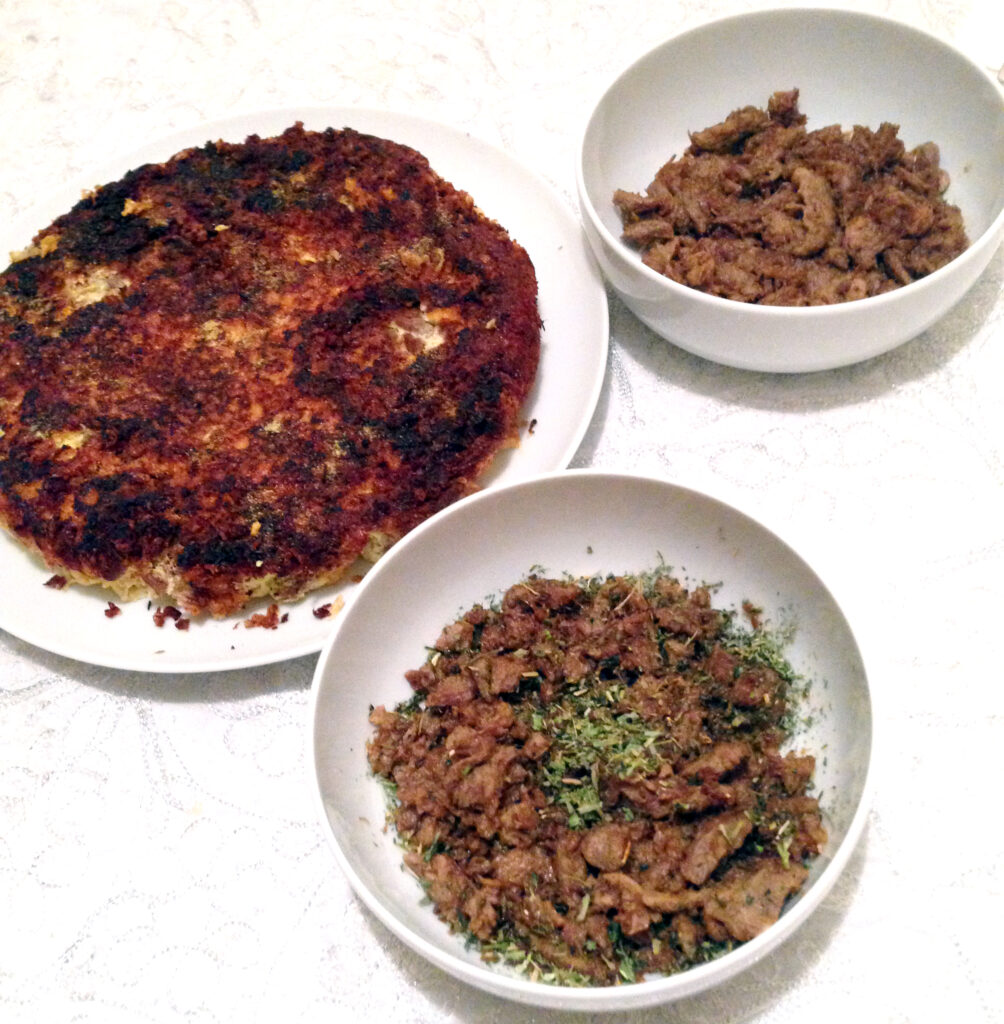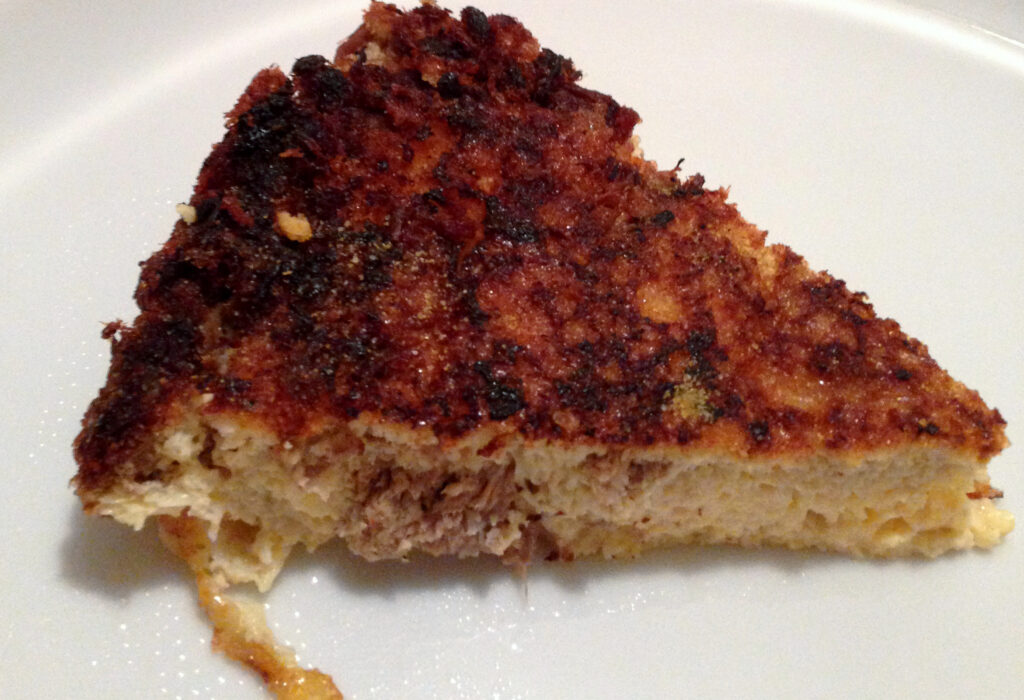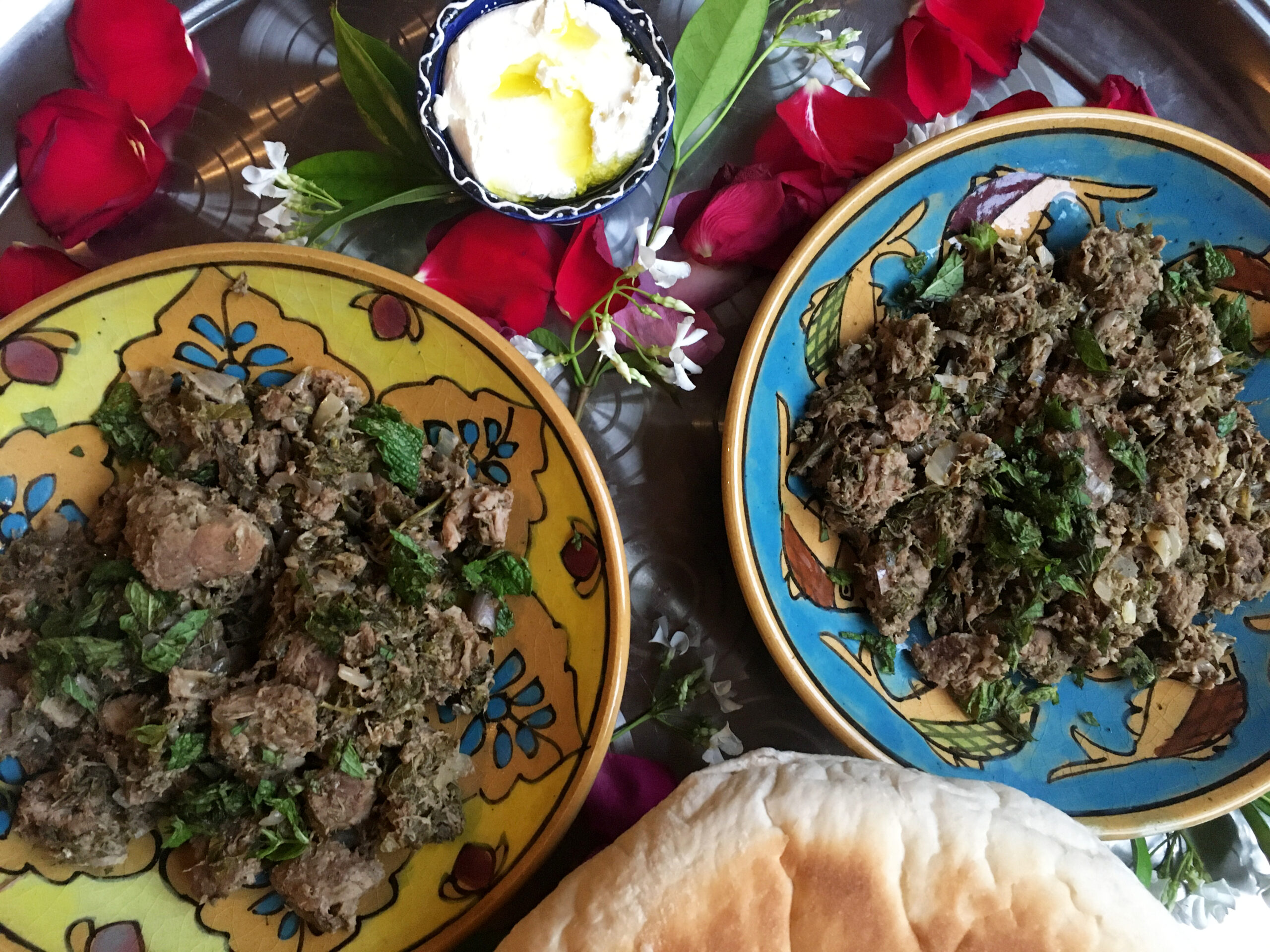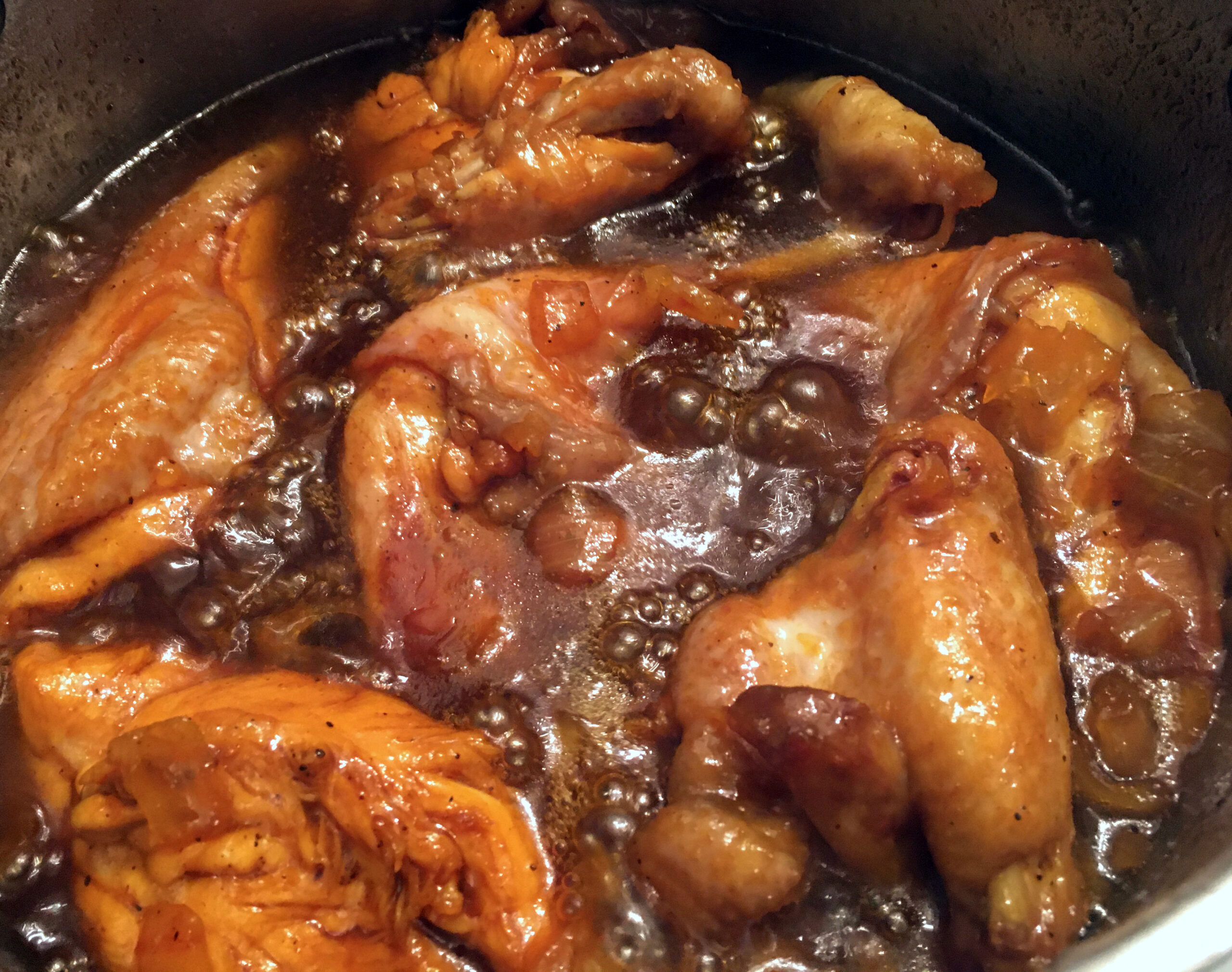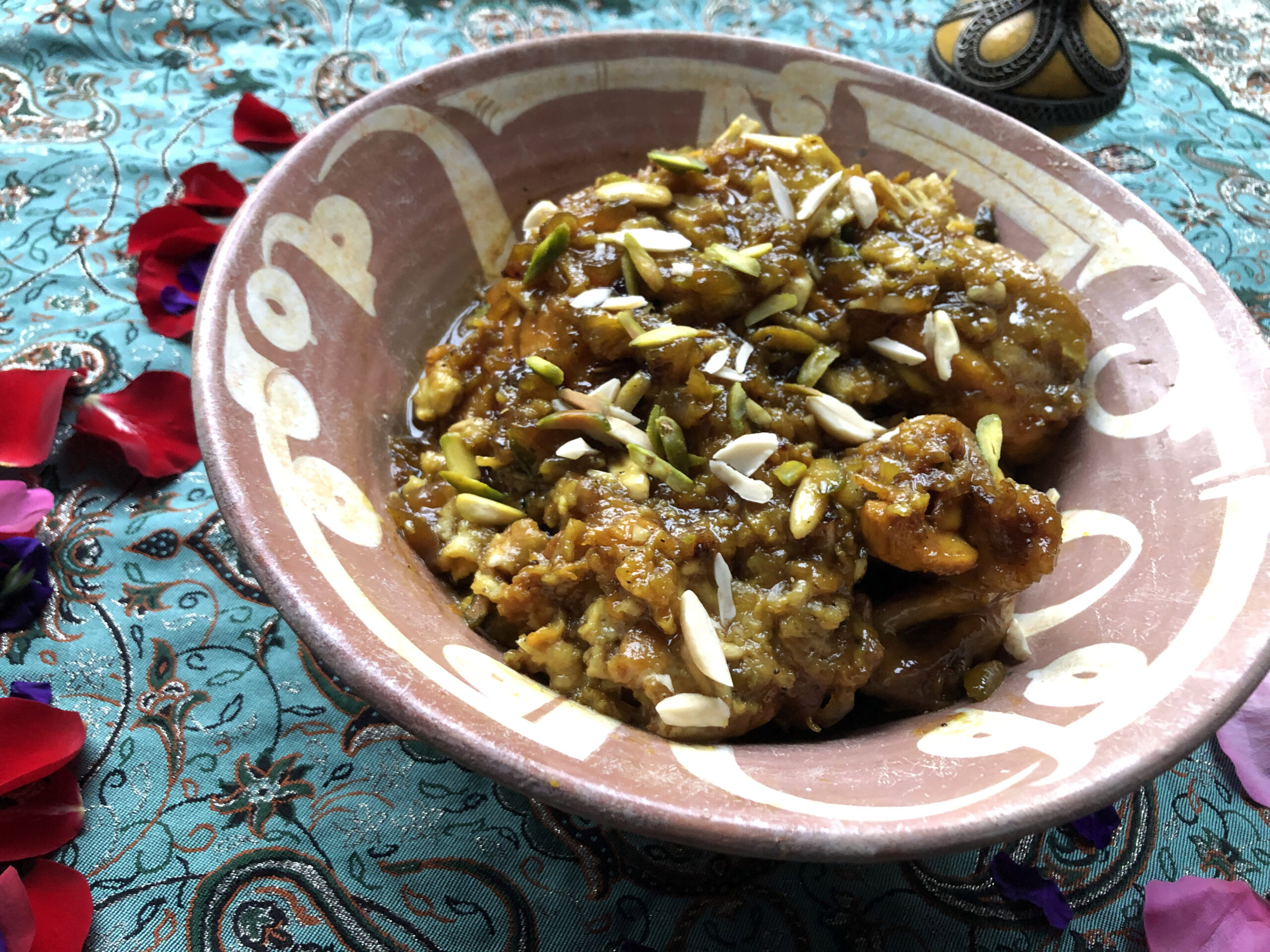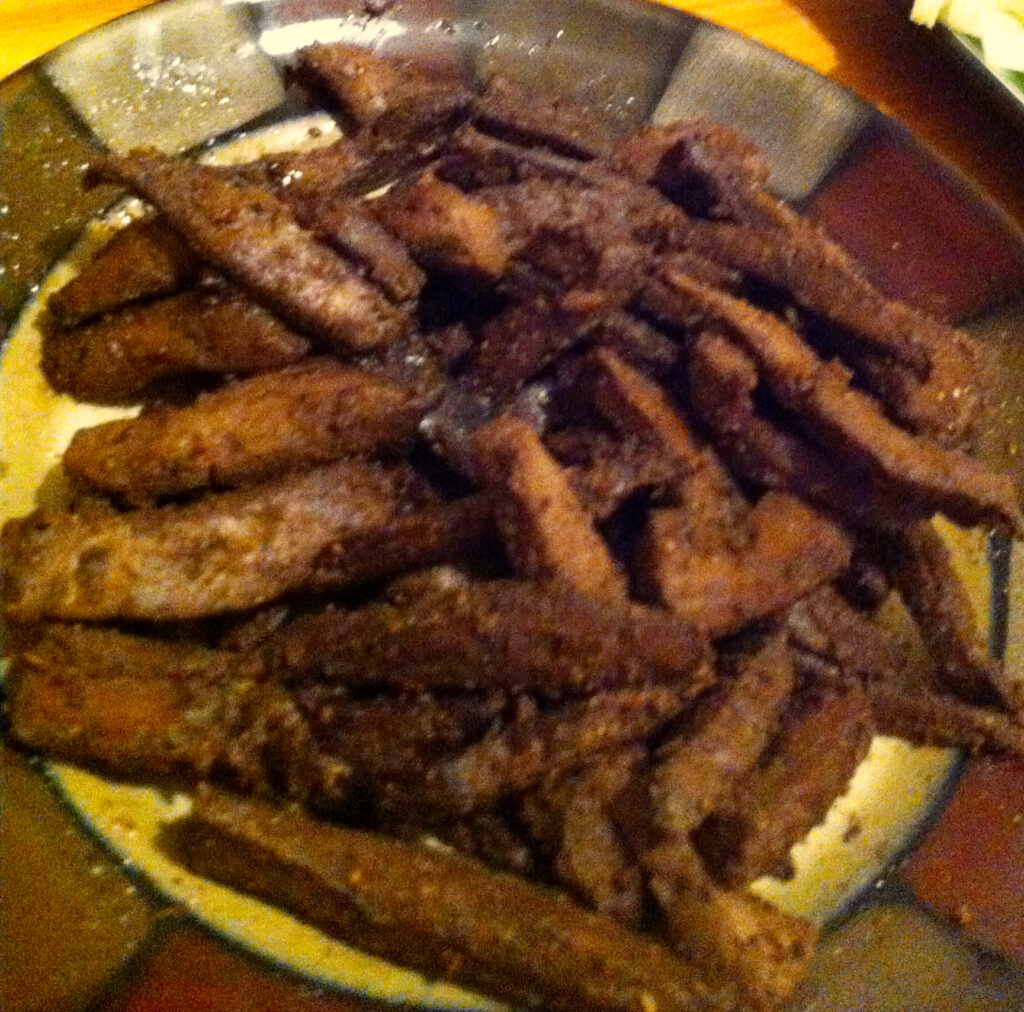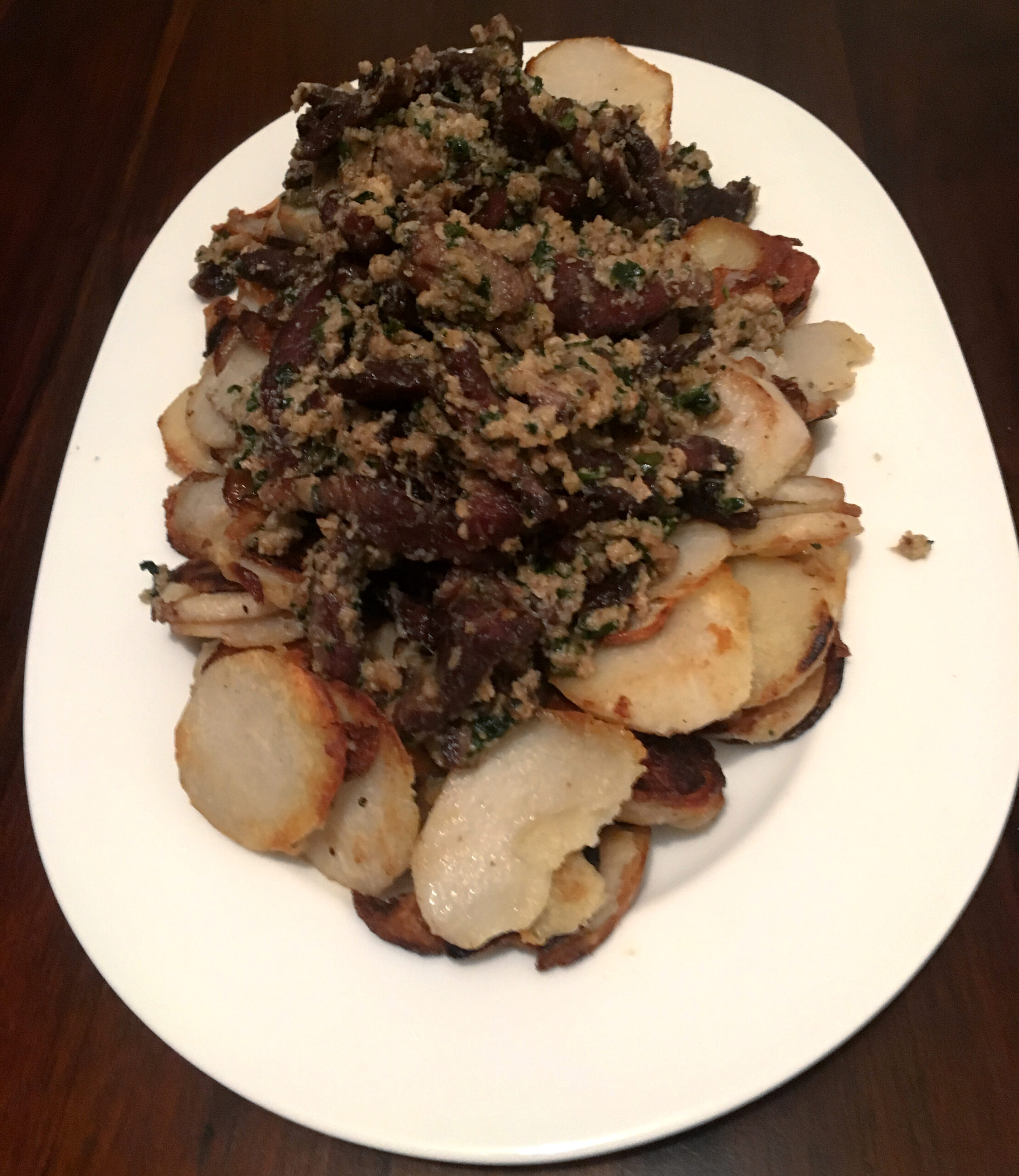This is the oldest known ancestor of one of Morocco’s best known dishes, tagine of laḥm wa barqūq (لحم وبرقوق, ‘meat and prunes’), which is a staple at weddings. This particular recipe (simply called لون بالإجّاص, ‘dish with prunes’) is from a 13th-century Andalusian manual and involves diced fatty young lamb, cooked with salt, pepper, coriander, cumin, saffron, vinegar, mint juice and oil. When it is almost done, it’s time to add the prunes, also known in Andalusian Arabic as ‘cow’s eyes’ (عين البقر, ‘ayn al-baqar), which have previously been candied and soaked in vinegar. Continue the cooking until everything is done, and then leave to cool down before serving with a garnish of egg yolks ad meatballs dusted with aromatics. As for the accompaniment, well that just has to be couscous, doesn’t it? And what about enhancing those taste buds even more with some of that sweet-and-sour pickled fennel?

